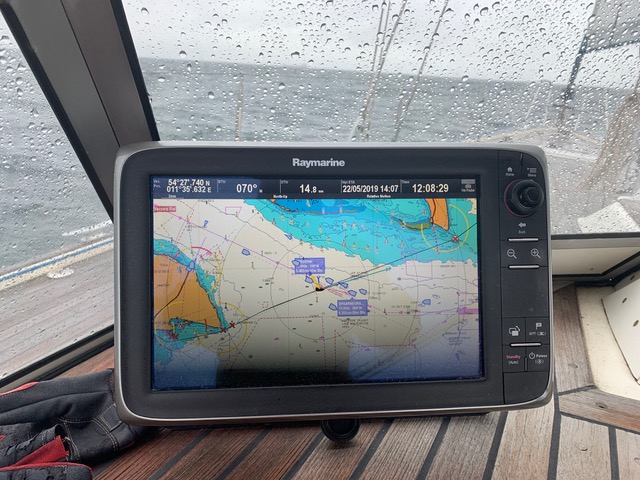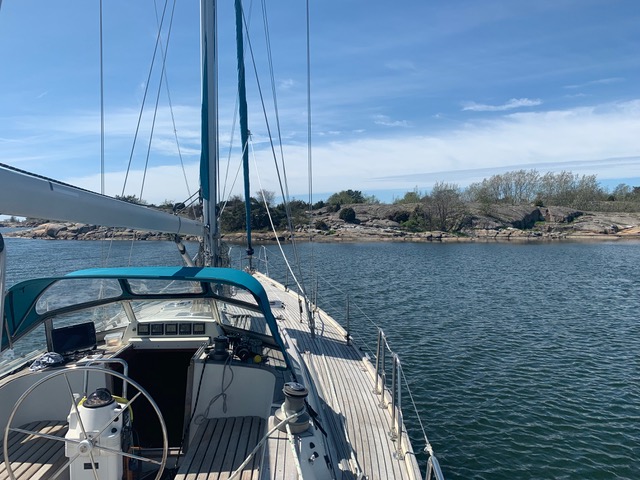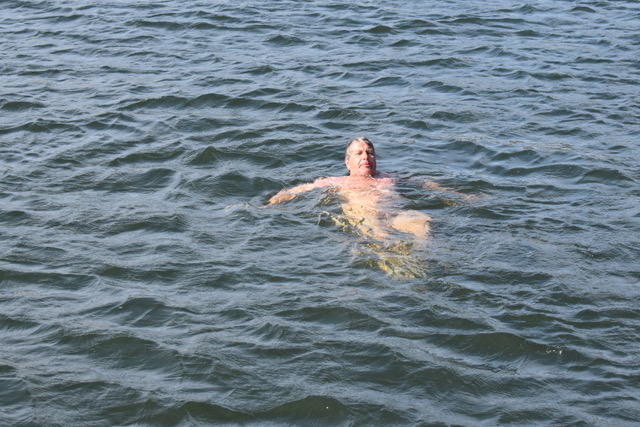Kjortelsviken, Ytter ön island/rock 56:05.227N 015:46.930E

Pelagia
Frans & Sarah Toonen
Thu 23 May 2019 05:43
Thursday 23 May 2019. Kjortelsviken, Ytterön island/rock 56:05.227N 015:46.930E Distance: 204nm Sailing: Mainly broad reach, reefed. Passage: 27.5 Hours Engine Hours: 2.4 Weather: Dry with moderate to good visibility. NW and W ranging from F4 to F6. Track: http://gpx.io/a/t5ab Blasting along on broad reach with an average over 7.5kts we managed 3 countries in 24 hours. Under full sail and with gusts up to 30kts forecast Captain Frans was reluctant to leave the Galley Slave in charge for long so he caught only a couple of catnaps. Leaving Germany at 9am we sailed close to Gedser and Mons in Danish waters before reaching the ‘Cape Horn’ of Sweden at 6am Thursday morning. We were overtaken only by flocks of Barnacle geese, Brent geese and male Eider. The Brent geese fly low and many V formations parted around Pelagia and formed undulating lines like a rope being shaken. We saw one razorbill and one guillemot which may not sound exciting but bird life is rare in the Baltic and these two must have been looking for Scotland where all the others seem to live. Sea life is also rare and having seen one porpoise already that may be it for the season. Despite cleaning the heat exchanger and blocked pipe on the raw water system the engine refuses to pick up water after heavy sailing on a port tack. The outlet from the raw water pump has to be disconnected and then after spraying sea water around the engine room and galley reconnected quickly to start the pick up. This is our ongoing challenge. Anchoring close to shore in shelter is like turning the wind off and Frans was soon napping in the sun after a toastie feast. On passage the heeling and bouncing limits the cooker use to occasional tea and hot food once a day comprising M&S dull tinned chicken stew preloaded into a deep pan before departure. The gimble and the pan guards keep the pot on the cooker but you don’t risk being nearby as it swings through 120 degrees. Large vessels have digital identifiers (AIS) which displays them on our digital chart and thereby helps avoiding collisions. It can get busy, having to work out separation between multiple targets.  At Anchor  The Swedish Archipelago  First swim of the season, 15C water temperature… almost a girl.  |